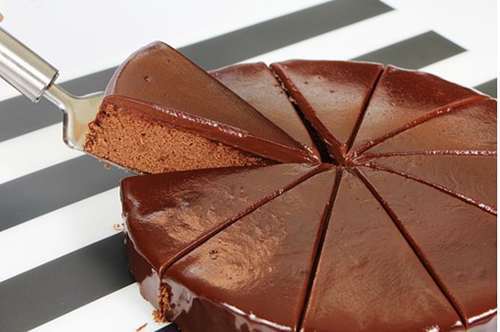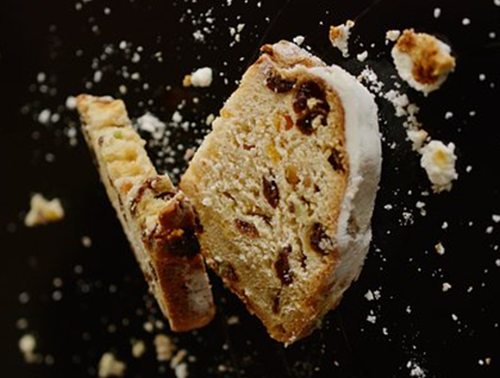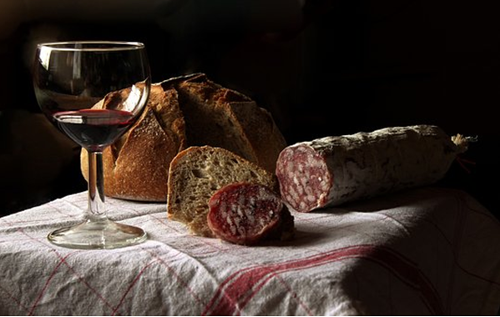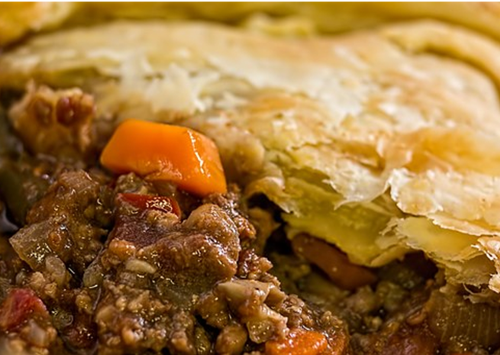I love the science behind ingredients because if you understand why something works in a particular way, then when it doesn't, you can put the recipe right next time.
Luckily, most recipes you use are balanced; but it is good to be aware of how ingredients interact with each other, and what their purpose in the recipe is.

In general, baking ingredients fall into two categories - those whose job it is to strengthen the structure of baked goods and those who are there to weaken it. Let me explain further.
Bread requires a strong structure to keep the bread from collapsing down during the long proving and baking process. It can’t just be a strong structure though, it also needs a soft crumb or it would be inedible.
If you have eaten Sourdough bread which has no fat – just starter, flour, salt and water, the bread is quite tough and chewy with a strong crust.

Brioche which has a very soft crumb and crust is enriched with lots of butter, giving the characteristics which are loved by all; and is mostly made the same way!

Two completely different breads, one with strength and substance, one soft and very buttery. The addition of a weakener, the butter, changes the characteristics of the bread.
Colour, flavour, shape, texture and volume in baking are brought about by the balance and relationship between ingredients.

To give you another example: If your cake bakes with a 'dome' in the middle there is too much raising agent (a weakener), being used and this must be reduced. Correspondingly, If your cake bakes with a dip, there is too little raising agent used, so must be increased (unless of course, you have under-baked, giving you a 'soggy' middle!).

Balanced Ingredients = Faultless Baking!
Flour, whole egg, egg whites, water and milk are there to strengthen and give structure to your baking.
Fats, sugar, egg yolks and leaveners (raising agents ), weaken the structure making your baking short, crumbly, rich and moist.

Let’s go into a little bit more detail by considering bread again. The protein within wheat flour (the gluten): in bread flour, has up to 12% protein. This is needed to hold up the bread during proving and baking. If pastry flour with approximately 9% protein is used instead, bread cannot rise as high. There is insufficient length in the protein chains to hold up the structure which will result in hard and stumpy bread.

Wholemeal flour has less protein due to the milling of the whole grain. This is why wholemeal bread made at home is always ‘dumpy’. In part due to the reduced protein levels; but also due to the bran particles in the flour, which cuts into the protein chains making them shorter and irregular.
Professional bakers put chemical conditioners into the recipe to ensure protein chain formation, and well risen loaves.

Water, when added to flour allows the protein chains to develop. The starch part of flour absorbs the water and act as the filler giving volume and helping with the structure.

Source
Hey, you now understand the science behind bread!
When fat is added to a bread recipe (as in brioche), it 'cotes' the flour molecules reducing protein chain development; as all of the water cannot get through the fat to develop the protein in the flour. This is very advantageous when making pastry.

The broken protein chains mean pastry is 'flaky' and 'short'. This is why bread recipes generally include only a small amount of fat, while pastry has much more. The higher the fat content in pastry the shorter the pastry, as the length of chains are shortened by the fat.
Everyday short crust pastry contains a flour to fat ratio of: 2:1 (i.e. twice flour to fat). The finest sable pastry has a flour to fat ratio of 1:1 (i.e. equal flour to fat), it is very short and very rich; and very difficult to handle.

Fat also adds flavour depending upon which fat is used. Butter imparts its flavour to the pastry, while vegetable shortening has no flavour; it just gives its 'shortening' properties to pastry. Unlike butter, vegetable shortening and lard contain no water; you are less likely to make tough pastry when using these.
Never use the ‘whipped’ margarine/butter sold today, they are 'whipped' with water - as much as 25%. Remember, the gluten chains begin to develop as soon as water is introduced, so using a fat which includes water, can result in ‘tough’ pastry if you are not careful.

Enough for now I think; so let's look at more of the ingredients next time, in particular, eggs!
For Now.... More Interesting Posts:
@jaynie gives us a lovely chicken recipe with an interesting variation on potato hash - love potato hash!
@food-creator throws together ingredients and produces a really yummy cheese pasta dish....mmmmm!
@inkatieskitchen uses leftovers in a really interesting way; the wraps look so good!
and finally for now.....
@siriusden 's recipe for panacotta with cherry sauce just makes your mouth water!
Please dear Steemit friends, carry on posting great food ideas and recipes, because all I want to do is......

and......

and .......

as often as I can!


oooooh hi @allaboutpastries
i got half way through on the drive to work this morning :) Will show my love and check back in this evening. I have some questions for ya, im not much of a cook and need advice lol :) ... have an awesome day today!!!
ps check out mt latest comp which you just got a piece of :)
Really happy to help any time. My vast knowledge gleaned over many years is available to you kind Sir! :)X
Very good, To be honest, I dont know much about cooking, Im a terrible cook and lots of things dont make sense to me (until i see how delicious things are made then im hooked!!)... but I want to learn!!!
My problem now, is what to cook for supper. Im trying to be healthy, and my pallet was rather small, but i am doing a game changer in my life as the days and months go on but expanding that pallet with new things. So yeah, suppers... I dunno what to do for prepping on what to have or even what to have? got any idear on how to solve this? then maybe we can chat about some different supper recipes? Time is a huge thing too... sometimes I dont have alot of extra time to prep or cook :(
Hope you had a great day!
Hi Doll. Poor you! I have started a little series on 30 minute meals. The first three are on the allaboutpastries site, posted recently, and this will be continuing. I also have some excellent posts on my get-baking site. If you scroll down through the rubbish posts and just concentrate on the food ones, there are some recipes in images which take you step by step through lots of processes. Healthy too. Look at the how many meals can you get out of a chicken post, that one is great because it also covers stock making, which is the basis for soups. Trust me, if you want to learn, my recipes are easy and fool proof. Also, you get to learn processes through the images I take with my iphone. Though, sometimes difficult to stop my hand shaking when trying to do it one handed. Do look at the pasta sauce posts on get-baking - recent additions. The last two cover tomato sauce preparation in pictures, and then the last one tells you what you can do with the tomato sauce. Very useful. Don't worry about the pasta making posts, use dried pasta. My soups on the get-baking site - quite a way down, are hearty and healthy; use the chicken stock from the chicken post. Very simple. You can do what I do - living on my own in Spain, and make a big batch up, then freeze in small plastic bag, portion size. Then, take out whatever takes your fancy, warm up and eat .....simple! I know it will take you a little time to read through, but you will learn all you need to know from those posts. Remember, chicken one first! Get back to me any time for Q & A, I love to pass on knowledge. Shame I can't break through on Steemit, but hey ho, keep trying. Have a lovely day, from Almeria Province in very, very, very, Sunny Spain. :)X
You Sir have earned a resteem. If you agree, I would like to translate this article to Polish.
I have some small comments:
Check out my yeast water bread :)
You, Madam!!!! LOL:)X Sorry, couldn't resist. Thank you so much for your reply. Yes of course republish in Polish, I believe that knowledge is to be shared freely, so go right ahead.
In answer to your points:
I will definitely check out your post. I already promoted your introductory post on one of my bread posts. Thank you again for your response.
I hope I have not been too arrogant with my reply but I wanted to cover it in more depth for those not as advanced a baker as you are. :)X
There is a bit of a difference between knowledge and arrogance. While the line between the two is rather blurry, you're clearly in the knowledge side :)
Madam, of course, sorry.
Thanks, now I need to digest all the info :)
Thank you for putting me in the knowledge category! :)X
I should be done with translation tomorrow.
You are a brave soul. Posted part 2 tonight, luckily managed to keep it short and to the point. Images took ages, but you have to add images to break up text or people wont read. Sad eh? :)X
There: https://steemit.com/food/@breadcentric/troche-naukowo-o-pieczeniu I hope it's good enough. I'll try to read and translate the next one tomorrow or the day after.
I was wondering if you would let me publish the translation with link o the original on my blog: https://breadcentric.com
I found your article informative, entertaining, and easy to follow. Because I am sensitive to wheat protein, I experiment with wheatless recipes, and particularly with rye. Your explanation of balanced ingredients explains why I have had so many failures using mere substitution strategies. Thank you.
You are very welcome. I have a large knowledge of alternative flours and the mixing of them. I will really try tomorrow to post on this subject. Thank you for your comments and taking the time to read it. I do not expect much upvoting on this one. LOL. :)X
I just learned so much! It makes a lot of sense having done a bit of baking - and now and for the future I'll be able to pinpoint issues with more understanding. Thanks so much - resteemed!
You are so kind and thank you for the resteem. I will be covering the other ingredients in due course. However, I am conscious of scaring off viewers by giving too much 'science' at one time! :)X
Well I'm a scientist and I love food! So you are pleasing my tastes!! :)
Why thank you very much, from a scientist that is praise indeed! Worried that I had simplified the complex science too much? Hopefully the 'gist' is still there? The chocolate one should be a nightmare....how to explain the science of tempering? Hey ho, I take on these things. :)X
This is a fantastic post. Not only educational but very thoughtful. I thoroughly enjoyed reading. I've followed you and look forward to reading more posts from you!!
Why thank you very much. I wondered if this kind of post would go down well on steemit, happy to see that some people have found it useful. Will go full steam ahead now! :)X
This post received a 4.3% upvote from @randowhale thanks to @diggerdugg! For more information, click here!
Thank you very much for this, and to diggerdugg too......just love that name! :)X